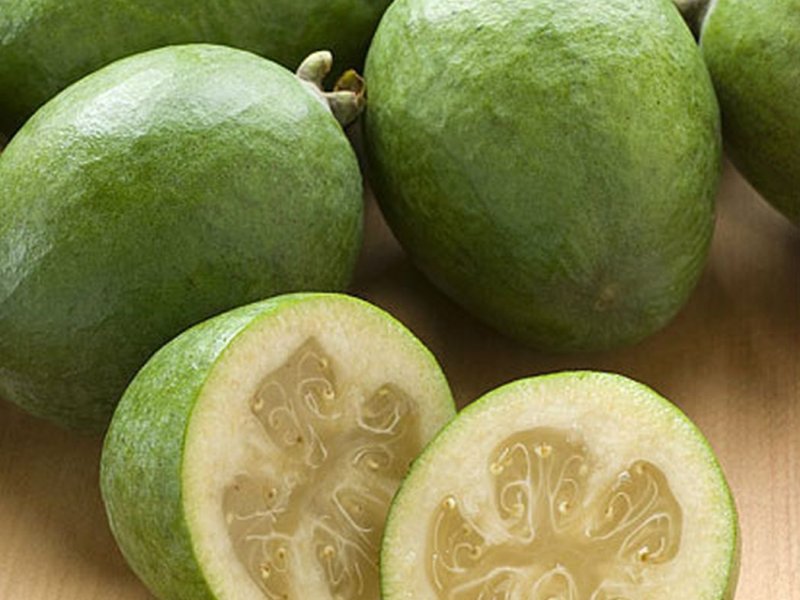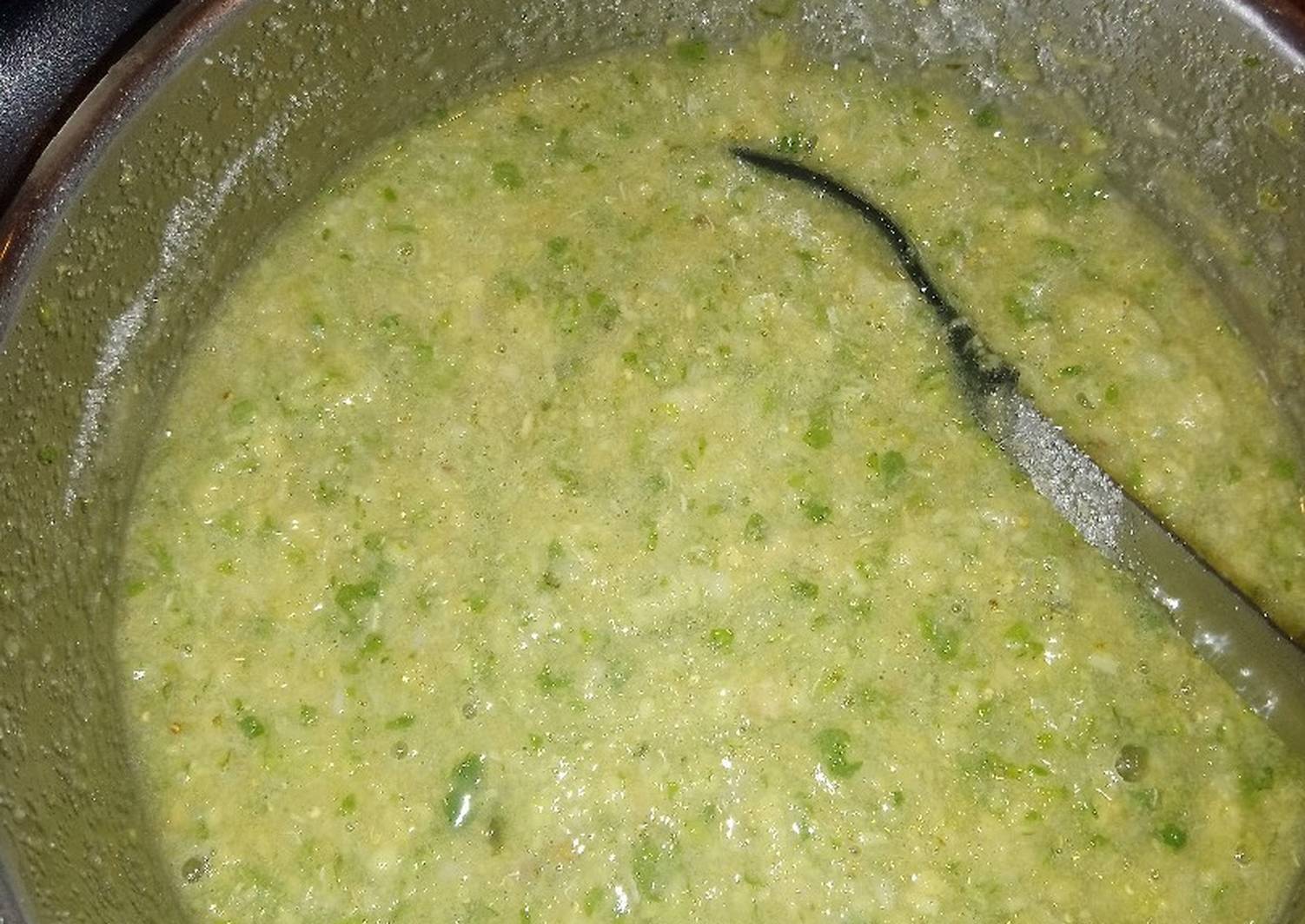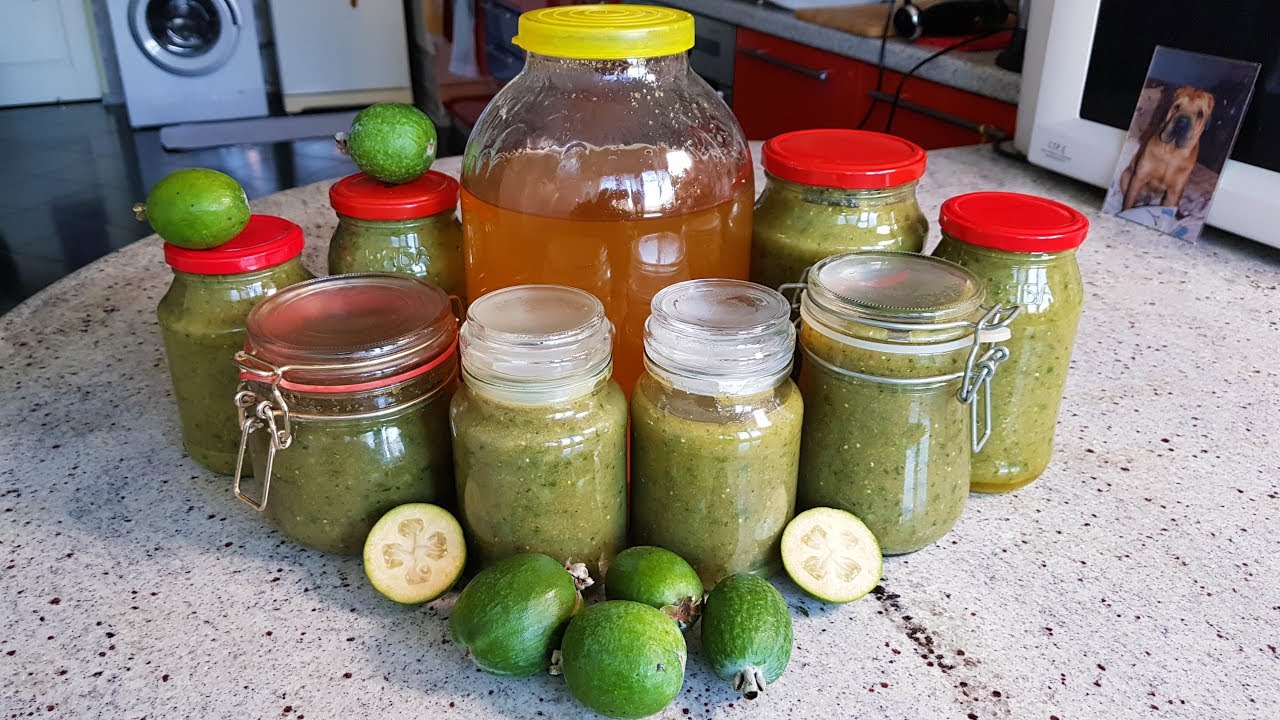Freezing feijoa for the winter
Feijoa - small, tropical green berries with a dense, lumpy skin, outwardly somewhat reminiscent of an avocado. This fruit, originally from the countries of South America, today can be found almost everywhere on Russian shelves, especially in the autumn months (October-November), coinciding with the period of their ripening, not only in the southern regions of the country (breeders have successfully learned to grow feijoa in the Caucasus, in the Crimea , in the Krasnodar Territory, in Azerbaijan and Turkmenistan).

Today, this inconspicuous berry can be found on supermarket shelves in almost any region of the world, and all thanks to the fact that, despite its modest size, it has managed to contain an incredible amount of vitamins and useful microelements, so necessary for the full functioning of our body.

What is the use of feijoa
If your acquaintance with this tropical "baby" has not yet taken place, then after reading this article, you will definitely set yourself the goal of trying to introduce the "miracle berry" into your regular diet.
Feijoa ripens in our "cool" latitudes in November, and this is the best time to eat fresh berries. The full ripeness of the fruits is evidenced by their falling to the ground. The pulp has a translucent, creamy and delicate texture, and the combination of notes of pineapple, strawberry and kiwi in the taste gives the fruit a wonderful, light taste.

In terms of composition, the berry consists of 86% water, 10.5% is occupied by carbohydrates, the remaining 3.5% are divided among themselves by proteins, fats and ash substances.
Ripe fruits contain high amounts of fiber and pectin, as well as 5 key amino acids: arginine, alanine, glutamine, asparagine and tyrosine.
The primary and beneficial property of feijoa is that the prevailing vitamins make it an excellent antioxidant. A record amount of vitamin C (20.3 mg per 100 g of product), phenols and anthocyanins are able to quickly remove free radicals and toxins from the body.
The mineral composition of feijoa is truly unique. The composition of the fruit, without exaggeration, contains the entire periodic table (zinc, iron, magnesium, calcium, sodium, copper, manganese). However, iodine holds the palm (up to 35 g per 100 g of product). The iodine content puts feijoa on a par with seafood in nutritional value.

Attention! The maximum iodine content is present in berries, which grow in coastal areas.
The product is low in calories (about 50 kcal per 100 g of product) and this successfully allows it to be used in dietetics, with targeted weight loss.

The benefits of feijoa are still under close study of scientists all over the world, but today we can say that the use of several fruits per day leads to:
- normalization of the endocrine system;
- improving the hematopoietic system;
- normalization of the state of the gastrointestinal tract;
- normalization of the genitourinary system;
- restoration of water-alkaline metabolism of the body;
- increased immunity;
- prevention of osteoporosis, Alzheimer's disease, hypertension;
- prevention of seasonal viral infections.

Note! Science has proven that the substances in the composition of the fetus destroy staphylococcus and E.coli. And also in some studies, the property of feijoa was revealed to act as a means of preventing cancer and their recurrence. But the WHO has not yet officially confirmed the results of these studies.
Another amazing property is that the consumption of tropical berries does not in any way cause allergies. This makes it possible to use it at any age, from one year to a very old age. The existing allergies to certain foods, pregnancy and lactation, old years will not become an obstacle.

All the benefits of a ripe fruit last no longer than 14 days. But the question of how to preserve feijoa at home involves various methods of preparing the product for the winter. Jam, jams, compotes are made from berries, ground fresh with sugar, but, undoubtedly, the best way to preserve the full value of nutrients is to freeze feijoa.

Can Feijoa be frozen
It is possible to store fresh product in the refrigerator for only a few days, then the water inside the berry will inevitably lead to its rotting. This means that the berries must be eaten during this period or processed.
Frozen feijoa will retain all the useful properties of the product unchanged and will not in any way affect its quality. There are no downsides to freezing, given the correct storage conditions for the product processed in this way, at any time in winter there is an opportunity to feast on it.
Freezing methods
Berries frozen in the freezer can be stored for up to one year. You can freeze the whole berry by cutting it into pieces and preparing the grated puree with or without sugar.

Defrosting the berry is also worth it right. If you just want to enjoy it, add it to yogurt or fruit salad, then it is best to move the required amount for several hours from the freezer to the upper compartment of the refrigerator.
Defrosting will take place gradually, without destroying the vitamin composition and preserving the appearance of the berry.

Defrosting at room temperature also leaves the entire value of the product unchanged, but does not affect its appearance in the best way. Therefore, this method is best used if you plan to use the berry in the preparation of jellies and mousses.
It is categorically not recommended to defrost berries in a microwave oven, because a sharp temperature drop will lead to a reduction in the amount of beneficial trace elements, to the loss of juice and integrity.
Important! You cannot re-freeze the berry, so it is advisable to do this in small containers or divide into portions for single use.
Fruit preparation
Regardless of the way in which we will freeze feijoa, preparation should be carried out according to the following procedure:
- We select only ripe fruits. We carefully monitor that among them there are no overripe and starting to deteriorate.The maturity of the fruit is evidenced by a uniform, green, without darkening color of the peel and the absence of a stalk, because the harvest is carried out from the ground of already fallen berries, and not plucked directly from the tree.
- Wash thoroughly in cold water.
- Cut off the bases on both sides of the fruit.
- The washed and trimmed feijoa must be dried on a paper or cloth towel.

Freezing whole fruits
Is it possible to freeze whole feijoa for the winter? Sure. If you prefer to use the berry in its original form in the winter months, or add it to yogurt, and also have a sufficiently large freezer volume, then we lay out the prepared and dried fruits in one layer on a tray covered with a clean sheet and put them in the freezer.
For even freezing during the day, turn the berry over, swap it. When the feijoa is firm enough, place them in portioned plastic containers with airtight lids and place them in the freezer.

Freeze in chunks
Storing chunks of feijoa frozen is also a fairly popular way of processing. In this case, a core is cut out of a carefully prepared berry, peeled, cut into small pieces, laid out in small plastic bags, air is removed using a vacuum installation and the packages are sealed. Feijoa can be stored in pieces, as well as whole can for a year.
This method is preferred by those who are embarrassed by the slightly bitter and tart taste of the peel of the fruit, and they use only the pulp for food.

Frozen puree
The pureed type of freezing is also gaining popularity. Suitable mainly for owners of small freezers. You can cook it by twisting the feijoa together with the peel in a meat grinder, in which case small pieces of berries will be clearly felt in the mass. For those who prefer a smoother and more uniform consistency, you can grind the berry in a blender.
Then, as in the cases described above, the puree is laid out in portions in containers or bags and sent to the refrigerator.

Note! The mass prepared in this way must be sent to the frost as quickly as possible, because due to interaction with air, it quickly "oxidizes" and loses its greenish tint. Fast darkening is a rather distinctive feature of this fruit and the variations in dishes with it.

How to make sugar feijoa blanks
As from any other berry, preparations with sugar are made from feijoa. This method of preservation without boiling helps to preserve the freshness of the product without subjecting it to heat treatment and preserving the maximum possible vitamin composition of the berries.

To prepare the blank, you must thoroughly rinse the berry in cold water, dry it with a paper towel, cut the stalks on both sides, grind in a blender and add sugar in a 1: 2 ratio (one part of the berry to two parts of granulated sugar).
Then the mass is placed in a clean glass jar, tightly closed with a polyethylene lid and placed in a refrigerator. You can store the workpiece in it for no more than 3 months.

Jam
Thermal processing is a traditional, classic berry jam. Feijoa is no exception in this case.
Required Ingredients:
- 1 kg of granulated sugar;
- 1 kg feijoa;
- 200 ml of water;
- 1 lemon.
- We wash the berries, dry them, remove the seeds and grind them together with the peel in a convenient way, best of all with a blender.
- Grind lemon with zest in the same place. We combine feijoa, lemon and sand prepared in this way in one container, pour water there, put it on a small fire and bring to a boil, stirring constantly.
- After boiling, heat treatment lasts 2-3 minutes. Remove the mixture from the heat, let it cool, and then repeat the boiling and cooling procedure one more time.
- Then we put the jam in sterilized jars, "roll up" hermetically with metal lids and let it cool gradually for 1-2 days in the warmth, for example, "wrapped" in a blanket.

Jam
The recipe for making jam is extremely simple: one part of the berry is mixed with one part of granulated sugar. Both ingredients are placed in a blender and grind until smooth and sugar is completely dissolved.
Cooking is not required in this recipe. The uniform consistency makes it possible to use jam in the preparation of fillings for sweet pies and buns.

Compote
Feijoa is used to prepare not only mashed potatoes, but also drinks. The taste of such a drink, prepared for the winter, is amazing, and it is as easy as shelling pears to prepare it.

Required Ingredients:
- 250 g granulated sugar;
- 0.5 kg feijoa;
- 2 liters of water;
- ¼ tsp citric acid.
Thoroughly rinse the berry, dry it, cut the stalks. Fill the prepared, sterilized jars by a third of the feijoa, fill them to the top with boiling water and leave to cool for 1 hour.
After that, pour the absorbed and cooled water into a container, add sugar, bring to a boil and boil for 30 minutes, not forgetting to add citric acid at the end of cooking. Fill the berries with the resulting syrup and "roll up" the jars hermetically. Let it cool gradually during the day, "wrapped" in a blanket.

Other ways to store feijoa
Due to the high antioxidant properties of the fruit, it seems interesting to store the product in a specially made vitamin mixture.
You need to take in equal proportions feijoa fruits, raisins, dried apricots and walnuts. Cut all the ingredients into small pieces using a kitchen knife, place in a clean glass jar and pour over with natural honey.
Store the mixture in the refrigerator, use 1-2 teaspoons a day. During an exacerbation of acute, viral diseases, it will serve as an excellent strengthening of the immune system and become an obstacle to infections.

Storage periods
Let's once again clarify the maximum shelf life of this product, depending on how it is processed:
- Fresh fruits (refrigerated) - no more than 14 days.
- Harvesting from fresh feijoa with added sugar (in the refrigerator) - no more than 3 months.
- Jam from fresh feijoa (refrigerated) - no more than 30 days.
- Jam and compote prepared by heat treatment - no more than 1 year.
- Frozen feijoa whole, in pieces or pureed (in the freezer) - no more than 6 months.

How often can you eat the fruit?
This tropical fruit still has some contraindications for use. First of all, due to the high iodine content, it is contraindicated:
- people with individual intolerance to this product;
- patients with diabetes mellitus;
- obese;
- people diagnosed with hyperacid gastritis;
- people with oxalaturia (intolerance to oxalic acid).

Everyone else should add this fruit to their daily diet, but remember that the maximum daily intake is 400 grams.

As you can see, storing and preparing feijoa is absolutely not complicated and does not take a long time to prepare. It does not matter whether you eat the product fresh, dry it, freeze it or process it with the addition of other ingredients - there are undoubted benefits when using a storehouse of vitamins.
Video: how to cook feijoa with sugar





